Alfa Romeo 8C-2300 Monza #2111020 - 1932
Encouraged by the success of the Alfa Romeo 6C, the Milan firm decided in the early 1930s to develop a new in-line 8-cylinder engine. Vittorio Jano set to work and the 8C-2300 was born in 1931. The car achieved its first success at the Targa Florio with Tazio Nuvolari, many others would follow... This is how Alfa Romeo would line up crushing victories at the 24 Hours of Le Mans against the British crews:1931: three cars entered, the race was won with a 112 km lead over the car that came 2nd. Average speed of 125 km/h.1932: six 8C-2300s are in the running, two of which finish in the first two places on the podium.1933: even better, since the Alfas occupy the first three steps of the podium. Record average speed of 137 km/h.1934: The 8C Le Mans driven by Chinetti / Etancelin takes the victory with a 180 km lead over its pursuers. The 1934 8C delivers 180 hp with a maximum speed of 215 km/h.Four consecutive victories at the 24 Hours of Le Mans: a result that has gone down in motorsport history.
|
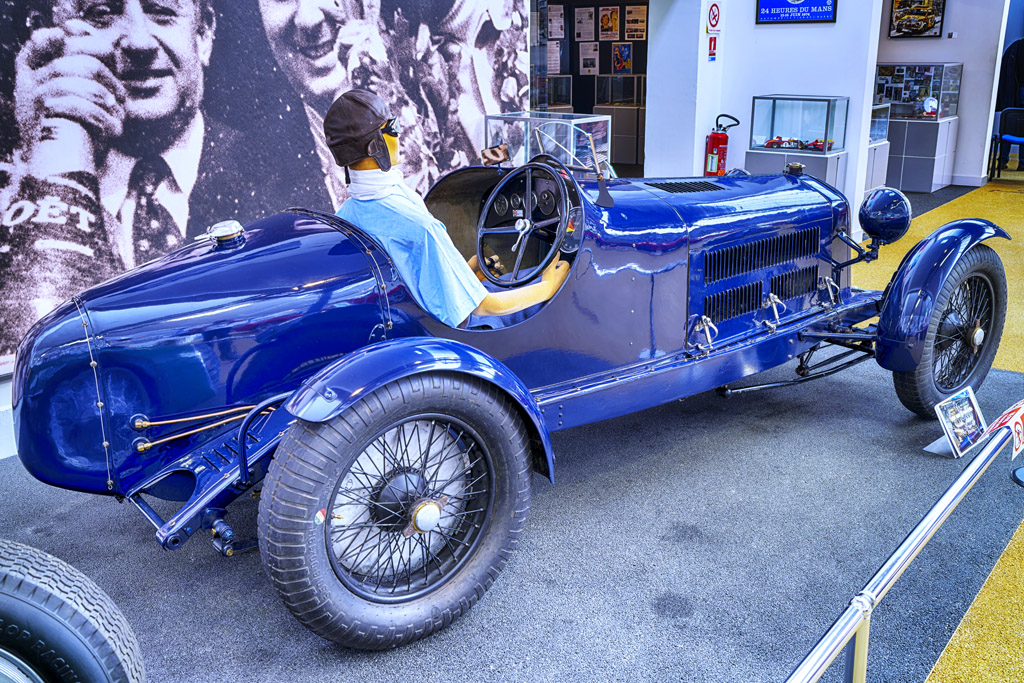
|
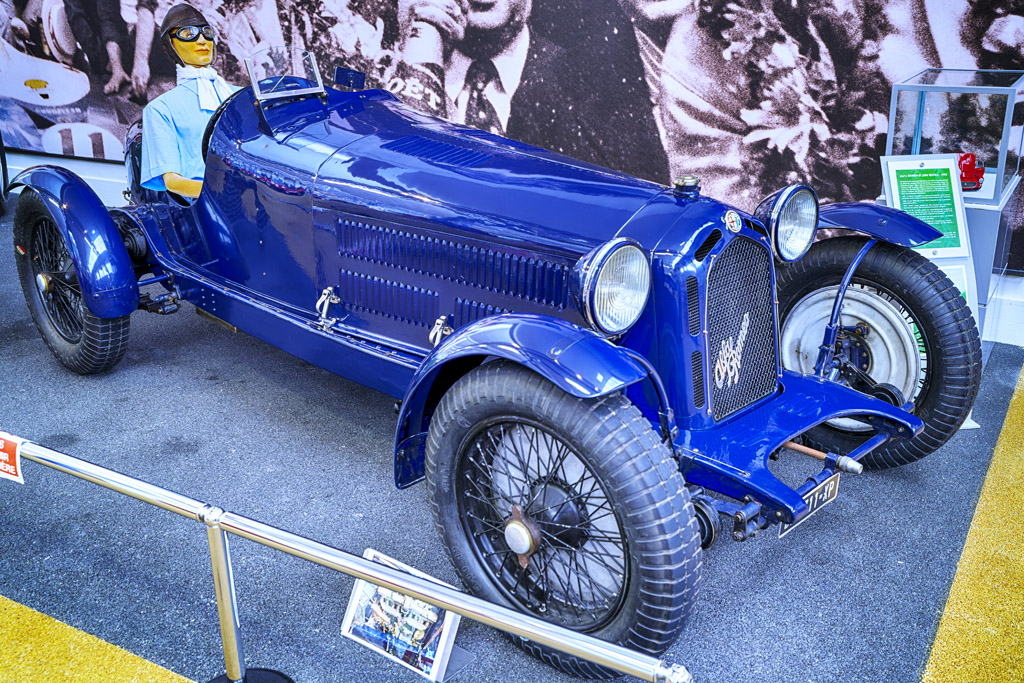
|
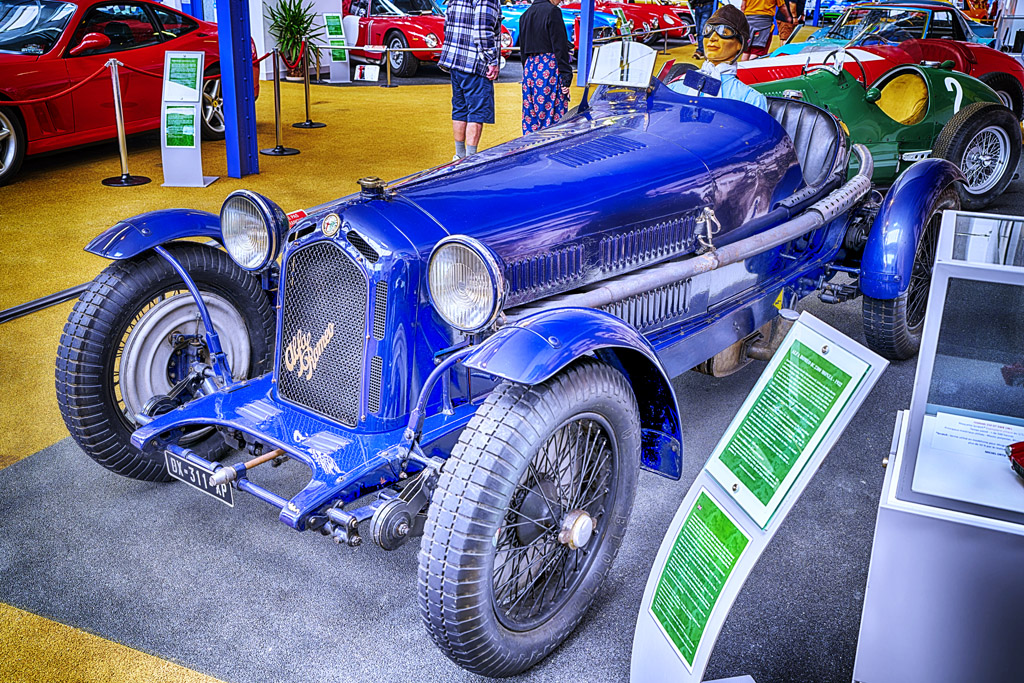
|
Alfa Romeo C52 Disco Volante Spider Touring #1359.00002 - 1953
This experimental car, bodied by Touring, was tested in a wind tunnel and produced in order to participate in sports category races, notably in the 24 Hours of Le Mans, where it was not entered.
Three examples of the 2-litre « Disco volante » were built in 1952 and two were modified the following year in order to carry out aerodynamic tests. One example received a roof and became a coupé and the other was modified at the level of the wings like the model presented here. As for the 3rd example, it was entered in a few sports events in 1953.
Two other C52s were built, but equipped with 6-cylinder in-line engines with double camshafts (3.5 litres - 227 hp at 6000 rpm, capable of reaching a speed of 240 km/h).
|

|
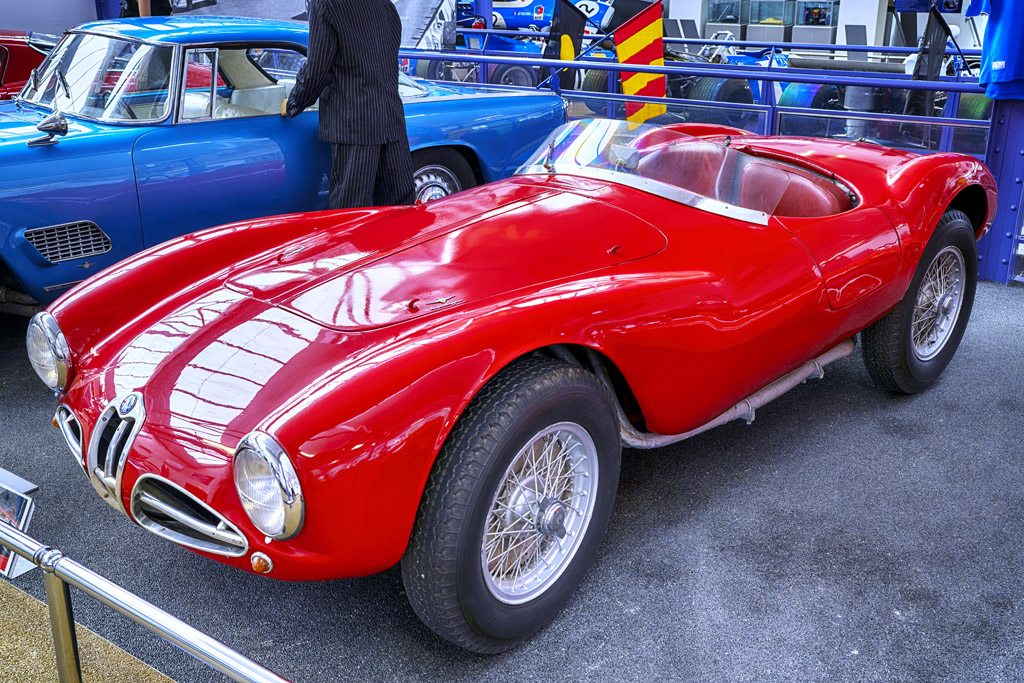
|

|
Alfa Romeo Tipo 12C - 1938
In order to counter the competition from increasingly aggressive German Mercedes and Auto Union cars, Alfa Romeo produced the Tipo 12C. Only 4 examples were built in 1938.
The model presented began its career in 1939 under the banner « Alfa Corse » before being bought after the war by the Swiss driver Willy Deatwyler who would do many races on Swiss territory with it. In 1950 Deatwyler had the two compressors reassembled on his engine which allowed the power to increase to 370 hp.
In 1952, he had his chassis shortened and the bodywork modified by the KOK company in Zurich then the coachbuilder Michelotti equipped the car with a plexiglass windshield. Accidentally damaged in 1954, the car was put up for sale and its engine was mounted on a racing boat.
It was in 1963 that Fritz Schlumpf (creator of the museum collection of the same name) bought the car without an engine, but then found it in Germany. Since then, the 12C has been exhibited at the National Automobile Museum in Mulhouse with its original V12 engine and its two compressors.
Today, only two Alfa Romeo 12Cs from 1938 remain.
|

|
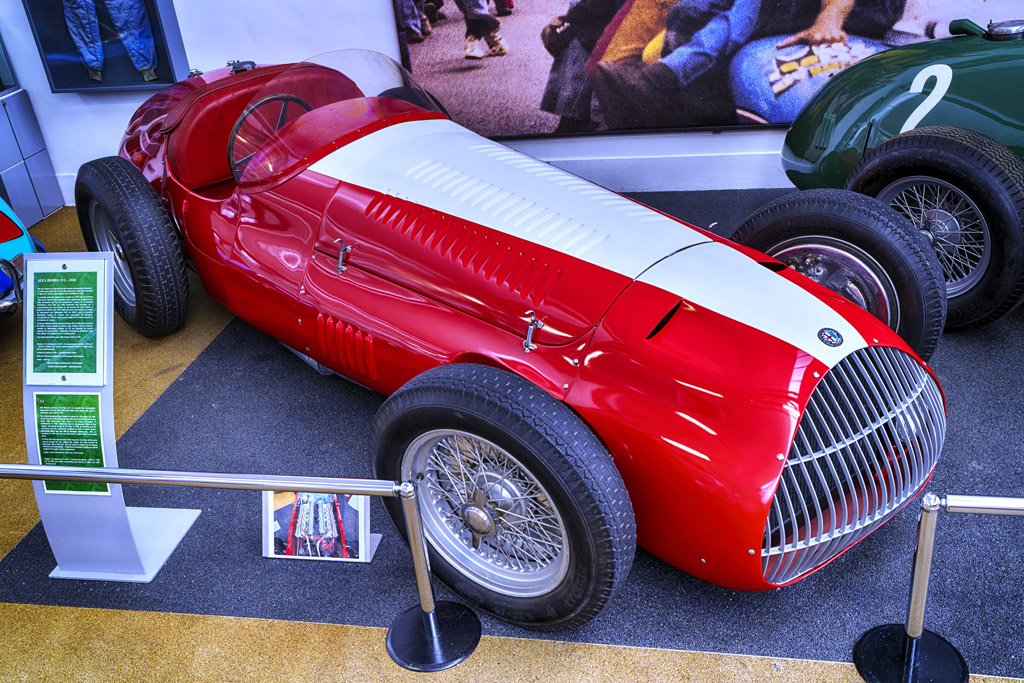
|
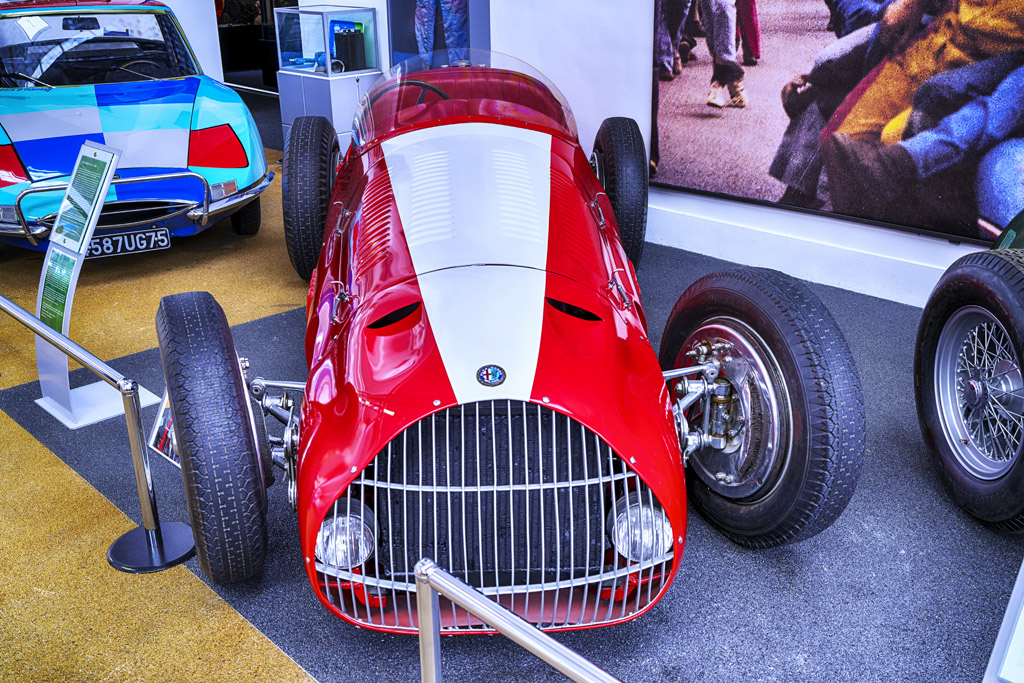
|
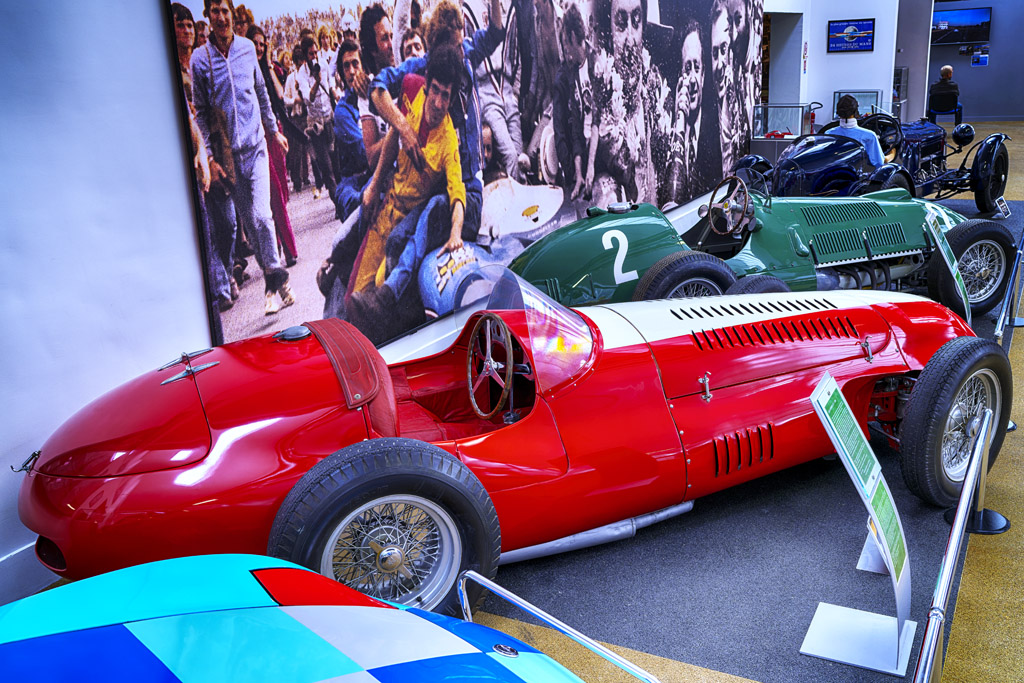
|
Bizzarrini 5300 GT - 1968
Giotto Bizzarrini, a top engineer, worked for Alfa Romeo and then with Ferrari, where a fruitful collaboration led to the creation of the 250 family, such as the Testa Rossa, the California and the GTO. He is also the father of the Lamborghini V12. Then came a stint at ISO, but with whom Giotto disagreed.
In 1966, Giotto created Bizzarrini SpA in order to produce his masterpiece, the 5300 GT, very oriented towards competition. Its engine from the mass production was a 5.3L Chevrolet V8 capable of propelling the beautiful Italian to 250 km/h. Its style very close to the ISO Grifo with a very long hood makes it one of the most beautiful vehicles of the 1960s. Despite everything, Bizzarrini SpA struggled to make money with its racing cars and in 1968, the company was put into receivership and then closed its doors for good in 1969.
|

|
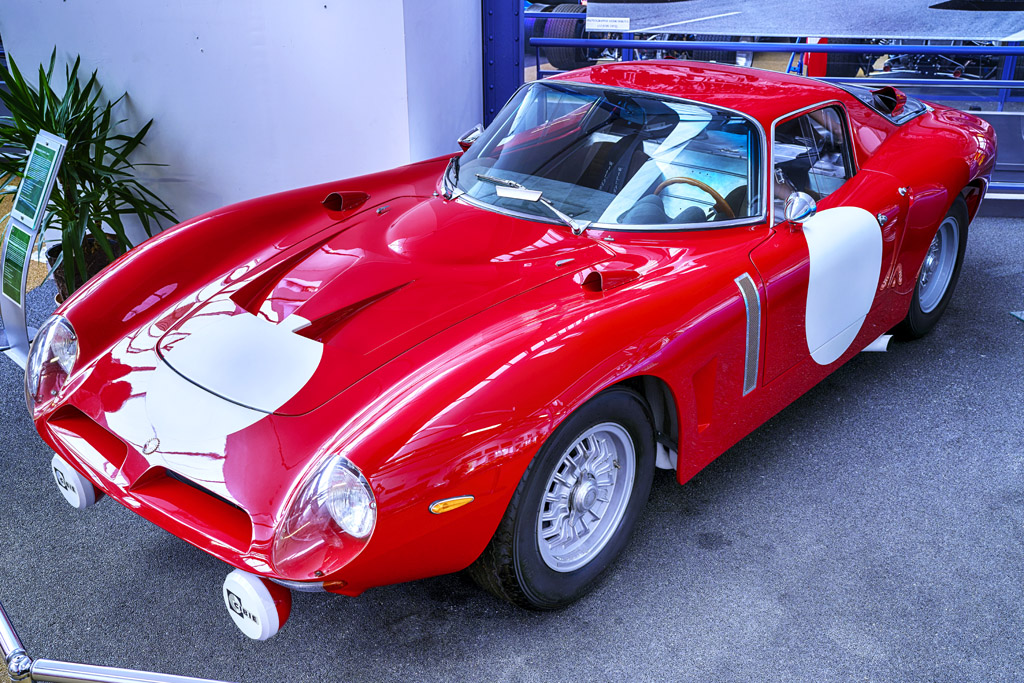
|

|
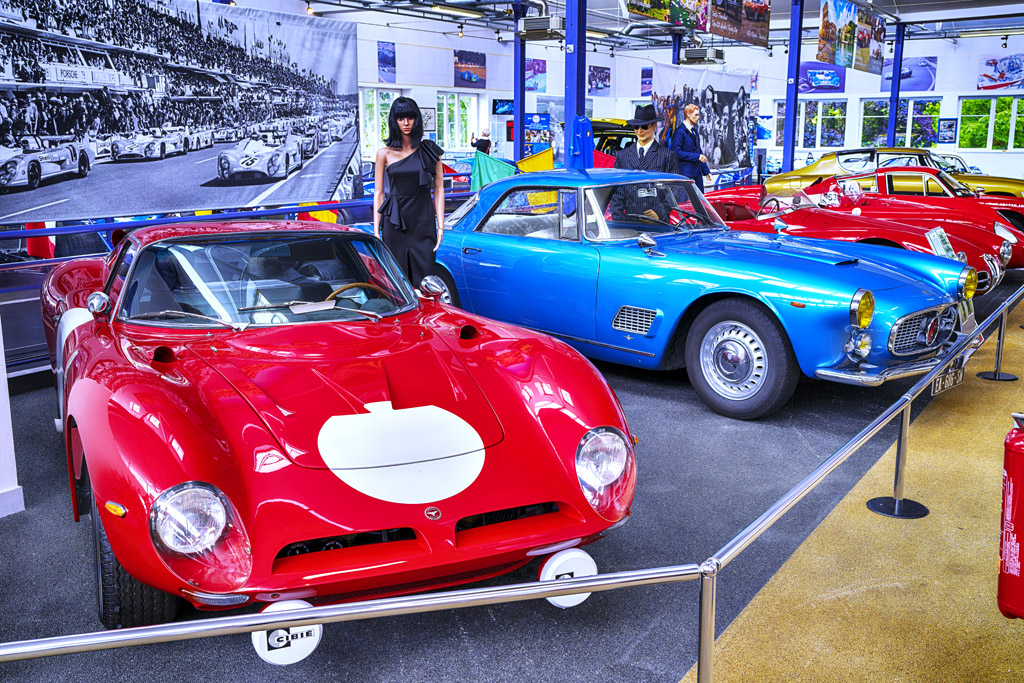
|
Ferrari 365 GTB/4 #15221 - 1972
The Ferrari 365 was nicknamed Daytona in memory of Ferrari's triple victory at the 24 Hours of Daytona against the Ford GT 40. In 1966, Lamborghini marketed its legendary Miura with a V12 engine, which revolutionized the world of Super GTs (with a mid-rear engine).
This great success piqued Enzo Ferrari, who responded with this 365 GTB/4 with a front V12 engine designed by Pininfarina designer Leonardo Fioravanti and unveiled at the Paris Motor Show in 1968. Two versions were produced in 1968 and 1973, the 365 GTB/4 coupe saloon and the 365 GTS/4 spider convertible.
Its first-rate performance, its line, its rarity and its racing record earned it an exceptional rating.
The Ferrari Daytona came in 2 versions, all bodied by Carrozzeria Scaglietti.
|

|
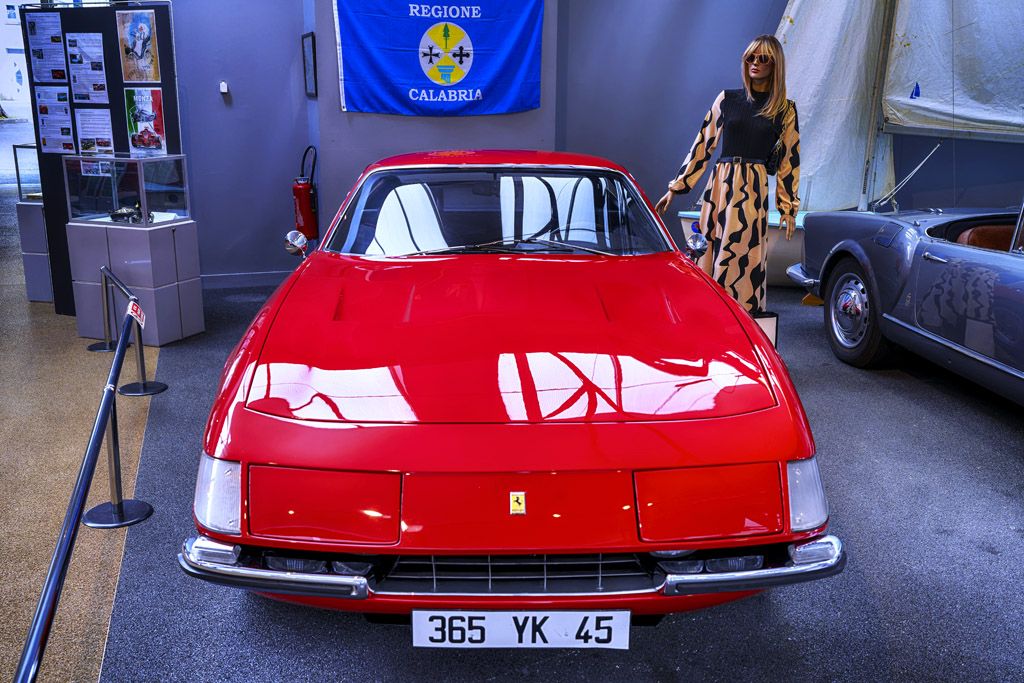
|
Ferrari 512 TR - 1992
During the 1980s, many teenagers' bedrooms were decorated with posters glorifying a red car that had become legendary: the Testarossa. A worthy heir to the 512 BB, it nevertheless offered a more modern style, replacing the conventional curves of older Ferraris with lines that reflected the era by « outdating » an aging competition.
Testarossa: all lovers of Italian cars had only this word on their lips to describe the sports car of their dreams. Because of the name change (the abandonment of the legendary name), we too often forget that it had an even more desirable descendant: the Ferrari 512 TR, which improved its aesthetics, its engine and its aerodynamics compared to the previous model.
|

|

|

|
Ferrari 550 Maranello #109545 - 1997
The Ferrari 550 Maranello replaces the 512M, the latest evolution of the Ferrari Testarossa. Designed by Pininfarina it marks Ferrari's return to a front-engine, rear-wheel drive layout for its 2-seater 12-cylinder model, 23 years after the 365 GTB/4 Daytona had been replaced by the mid-engined Berlinetta Boxer.
|

|

|

|
Ferrari F2 125 #114 - 1949
Presented for the first time on the « Florence circuit » in 1948, the Ferrari 125 F2 is equipped with the 2 L V12, its chassis is identical to the Ferrari 125 F1 (first competition car from Scuderia Ferrari in 1948).
The car presented to you was sold by the factory in 1949 to the British privateer Peter Whitehead with two engines, one of 1500 cm³ supercharged and a 2L Formula 2.
This F2 raced a lot in 1951 and 1954. There was a time when the Ferrari engine was replaced by a V8, but in 1998, the single-seater was completely and carefully restored which allowed it to find its 2L engine as well as many original parts.
|

|
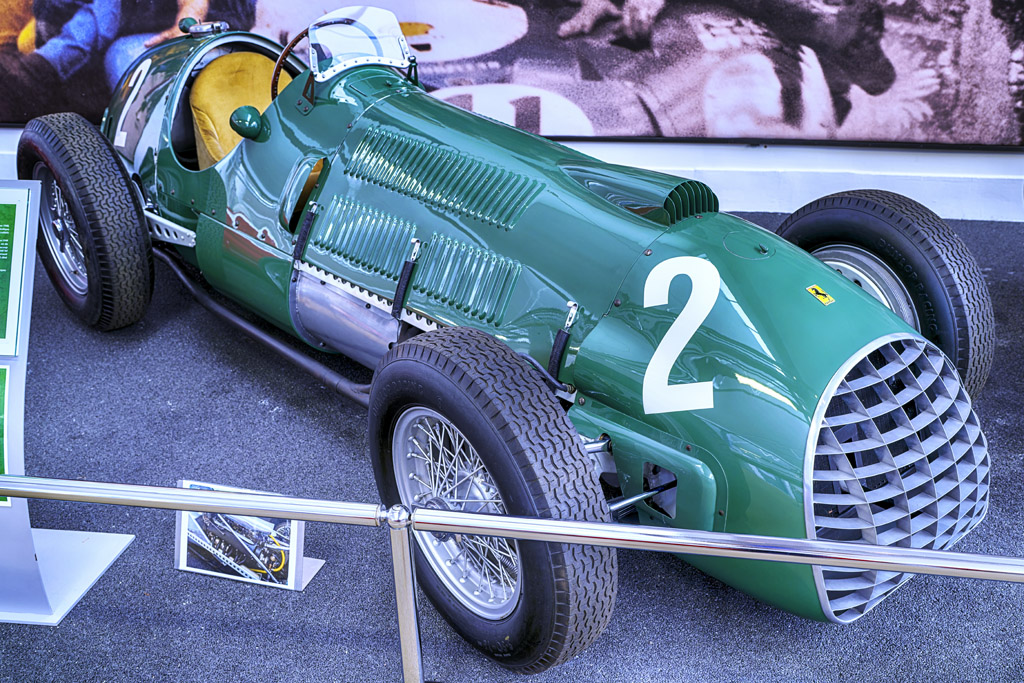
|
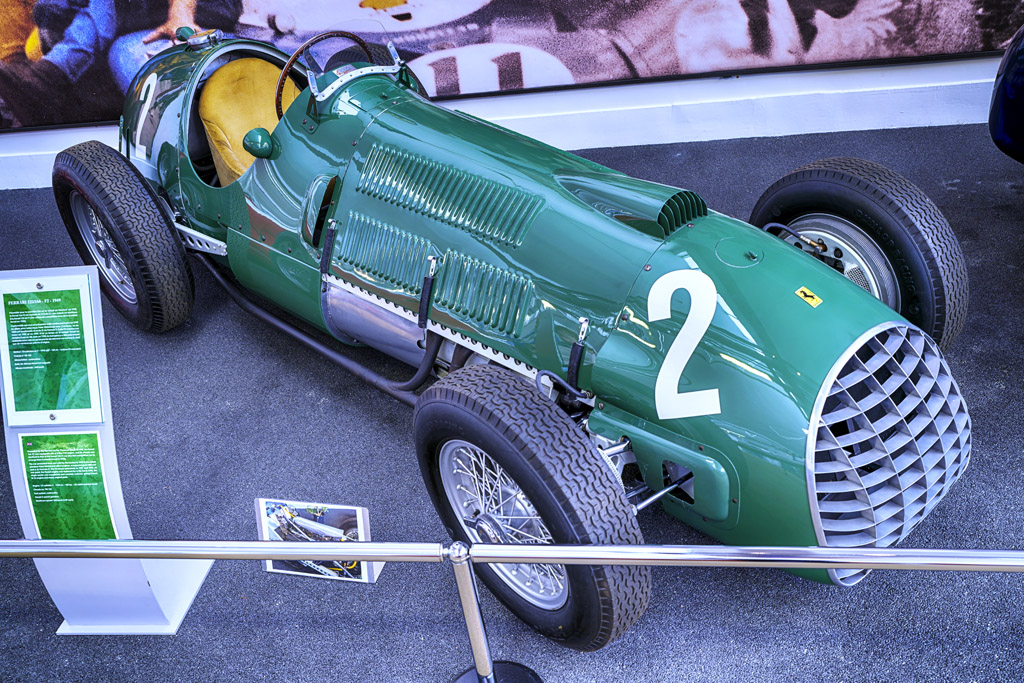
|
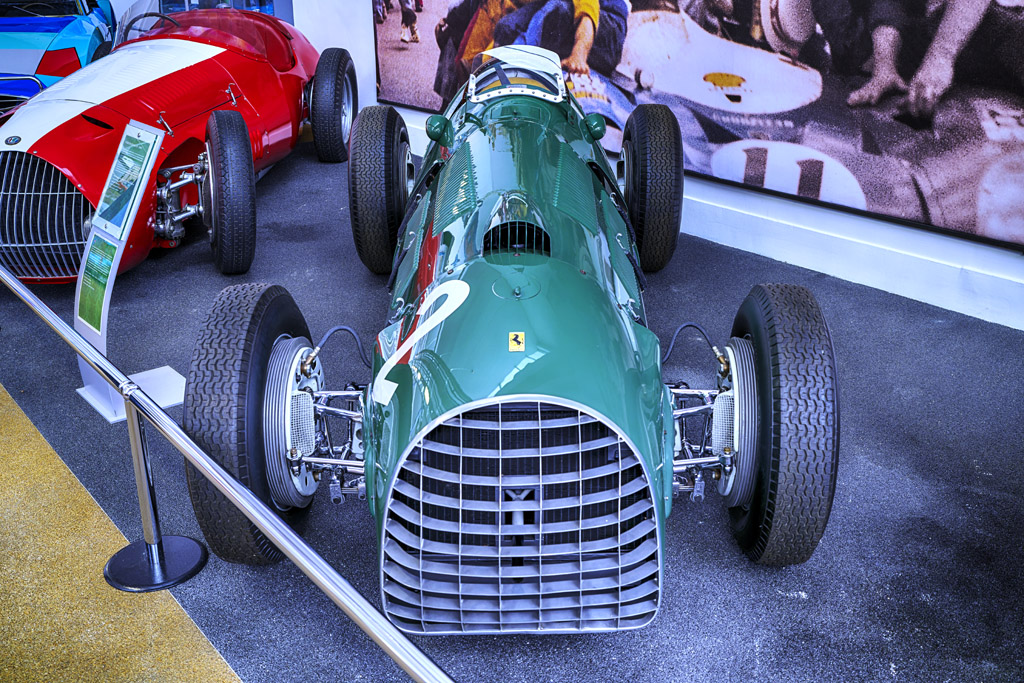
|
Fiat 500 Type 120 F Giardiniera - 1967
The first Fiat 500 Topolino were designed following a pressing request from the dictator Benito Mussolini who wanted to motorize the Italians with a small economical car.
The Topolino (little mouse) came out in 1936 at a price of 8900 lire. Their production was slowed down during the war years, but resumed with renewed vigor as soon as peace returned since 519847 cars left the Fiat production lines until 1955.
It was in 1957 that Fiat launched the marketing of the Nuova 500 designed by the engineer Dante Giacosa. This very small car, barely 2.97 meters long and 1.32 meters wide, weighing only 470 kg, with a two-cylinder engine that propels it to 85 km/h, was produced in 28438 copies in the first year.
|
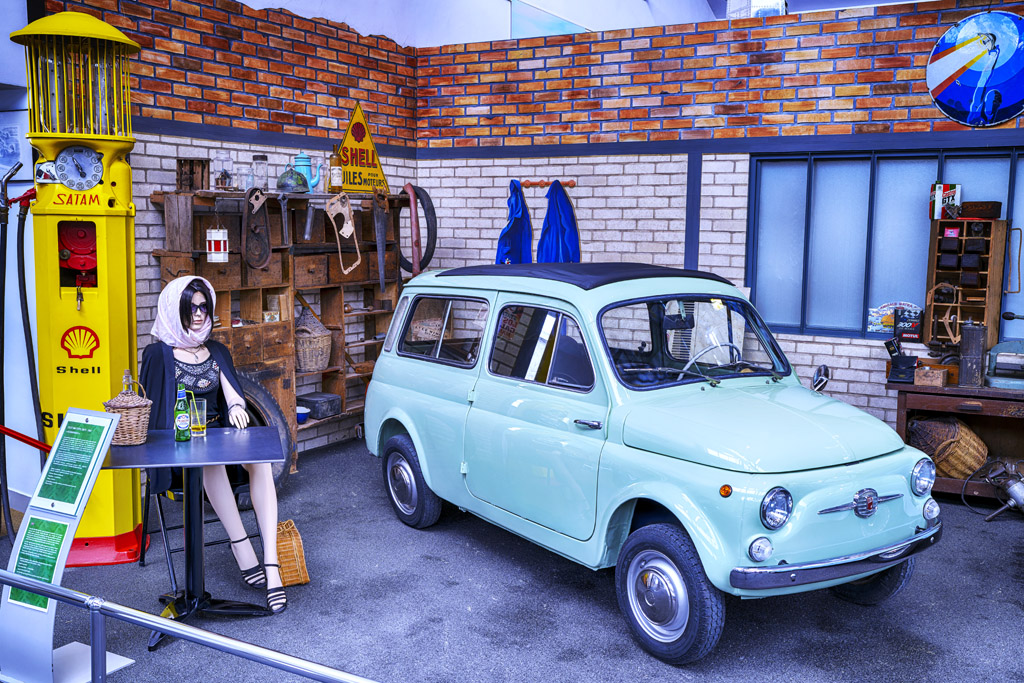
|

|
Fiat 508 Balilla Roadster - 1934
The Fiat « Balilla », produced from 1932 to 1937, is a high-class car whose running costs remain low and which will be the dream of many Italians.
The first version is characterized by a 3-speed gearbox coupled to a 995 cm³ 108 engine, which allows a maximum speed of 80 km/h.
Two years later, a second version arrives on the market with a 4-speed gearbox and a new, more aerodynamic body.
The 508 roadster or spider only has two seats, but does have leather upholstery and a folding windshield, here is the menu of this pretty transalpine racing car.
|

|
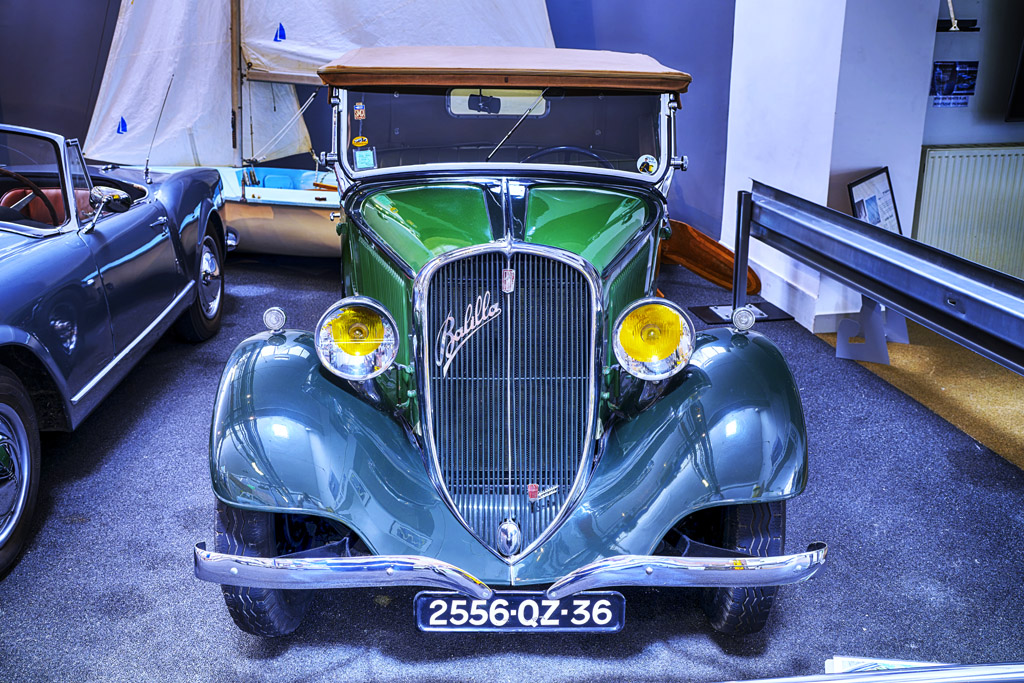
|
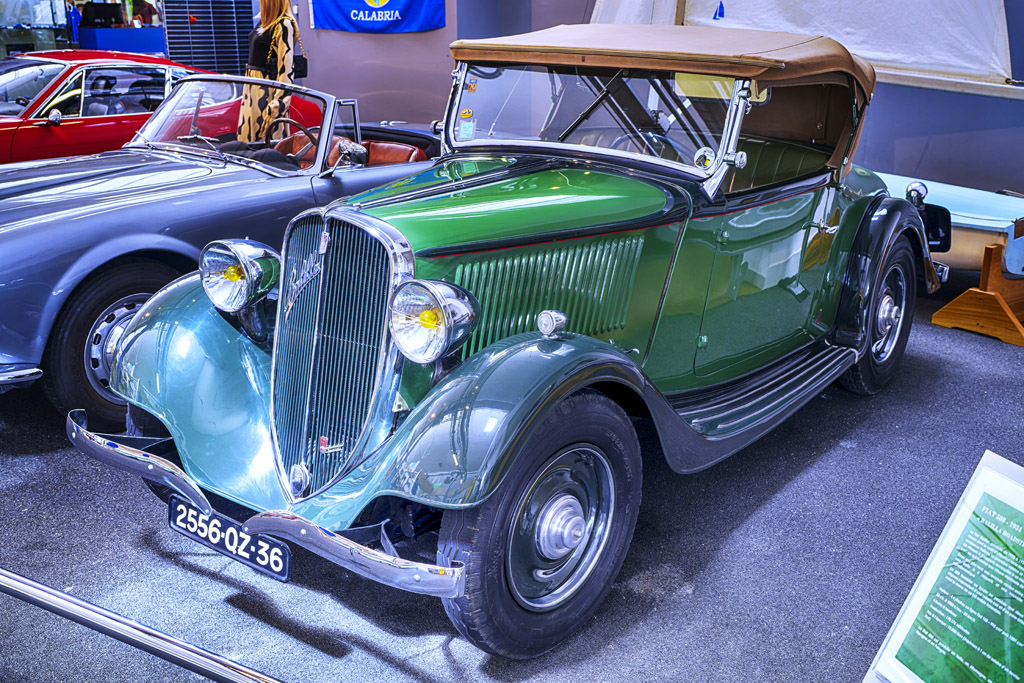
|
Fiat 600 Multipla - 1958
This family model is the first production car to try the concept of the MPV. Presented in 1956, it has 4 to 6 seats depending on the version and its 633 cm³ engine from the 600 sedans gives it 21 hp. The latter, placed at the back, allows for seats well forward.
The success is then there, many Italian taxis convert to the Multipla.
The vacationers of the 30 glorious years will also transform it into what will become the beginnings of the camper van.
In 1960, the engine now has a 767 cm³ cylinder for 39 hp. which propels the car to 105 km/h.
The year 1965 is the last year of production since the Fiat 850 family succeeds it.
|
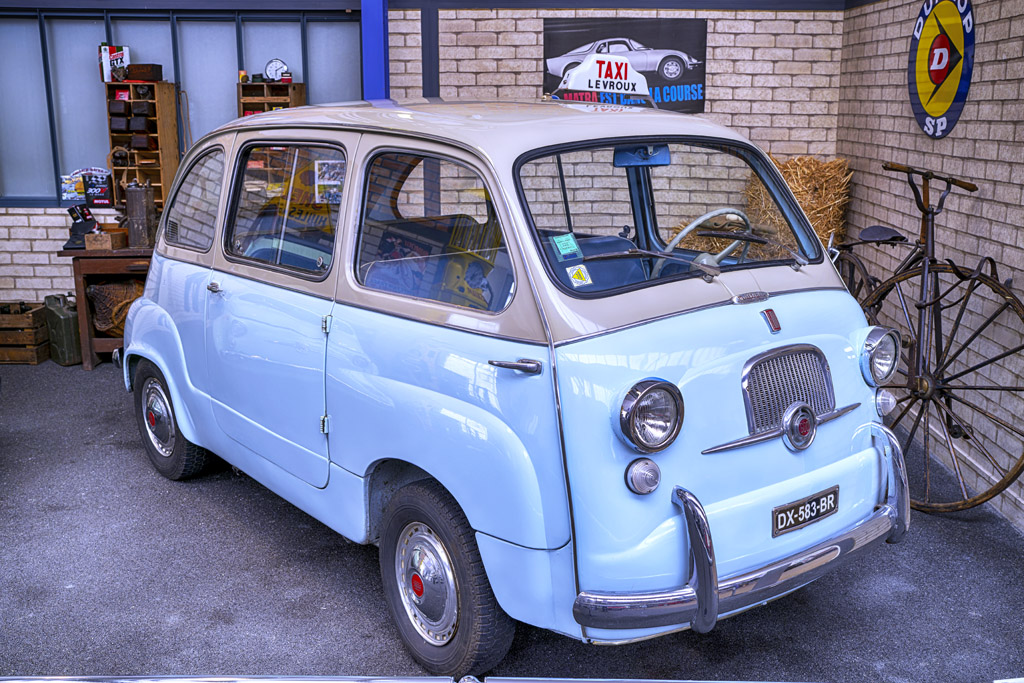
|
Fiat Abarth 1000 TCR - 1970
It was the Fiat 600 released in 1955 that was chosen by Abarth to create this pure ball of nerves that marked the beginning of the collaboration between these two brands.
Indeed, the 1000 TCR is a special high-performance version designed and developed by Carlo Abarth according to the specifications of Group 2 (and later Group 5) touring cars.
The ultra-prepared engine, radial cylinder head with hemispherical chamber, large valves, 2 double-body carburetors, made it possible to tease the Mini 997 cm³ (Austin Morris), of another « wizard » of mechanics, a certain John Cooper.
In 1971, the class went to 1300 cm³ which forced Abarth to withdraw its 1000 TC.
|
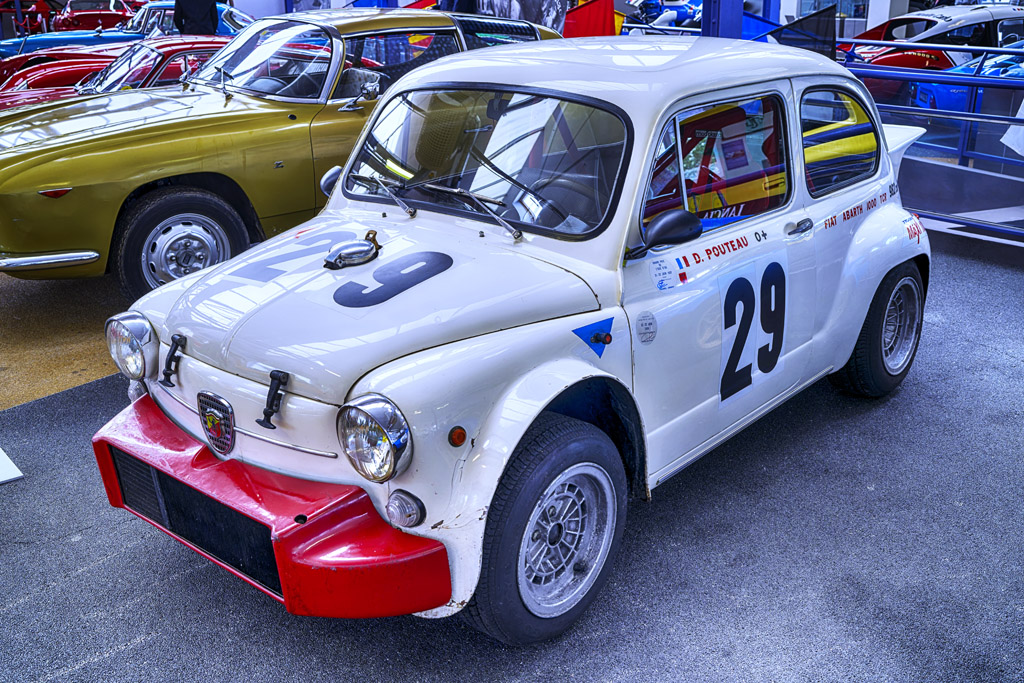
|
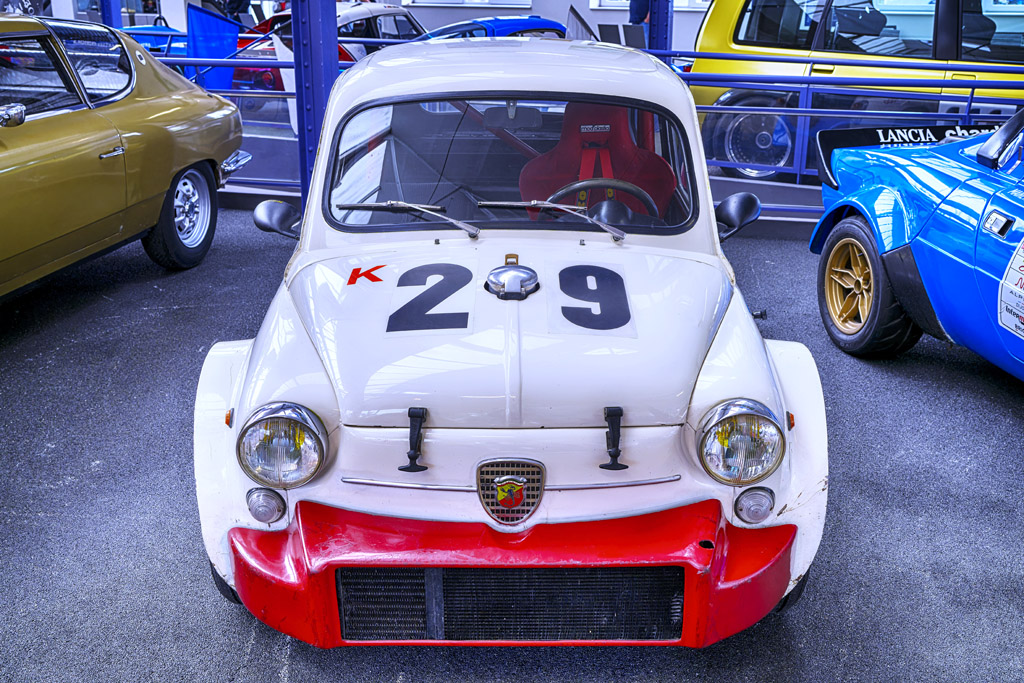
|
Fiat Abarth Monomille - 1962
It was in 1949 that Carlo Abarth, of Austrian origin, created Abarth & c.SpA in Turin. This company aimed to prepare cars for competition. Abarth would become a privileged partner of Fiat. The beginning of the fame of the scorpion firm is due to the exhaust pipes, but also to the Cisitalia brand.
Carlo Abarth produced the Monomille (mono = 1 camshaft, mille = 1000 cm³) which would be available in two versions: the Monomille scorpionne GT in 1961 - 1963 and the Monomille GT in 1963 - 1965 (bodied by Sibona and Basano). This « work of art », bodied by hand at Beccaris, in aluminum, is like all Abarth cars, relatively expensive, since the Monomille costs 35% more than a Porsche 1600 coupé, which limits its distribution. Less than 50 Monomilles will be produced.
|

|
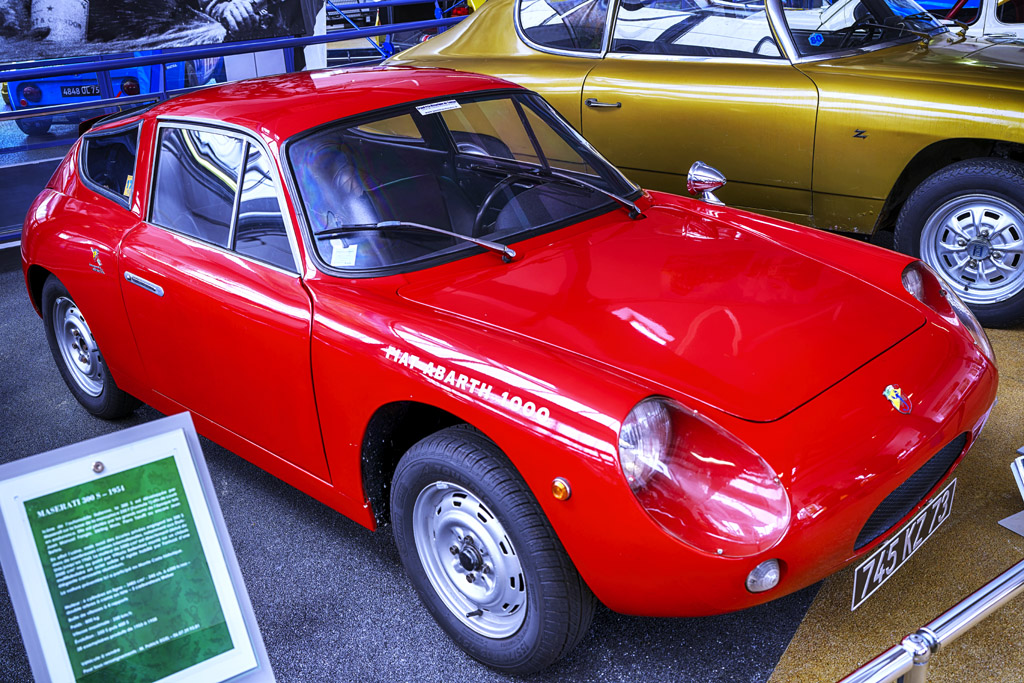
|
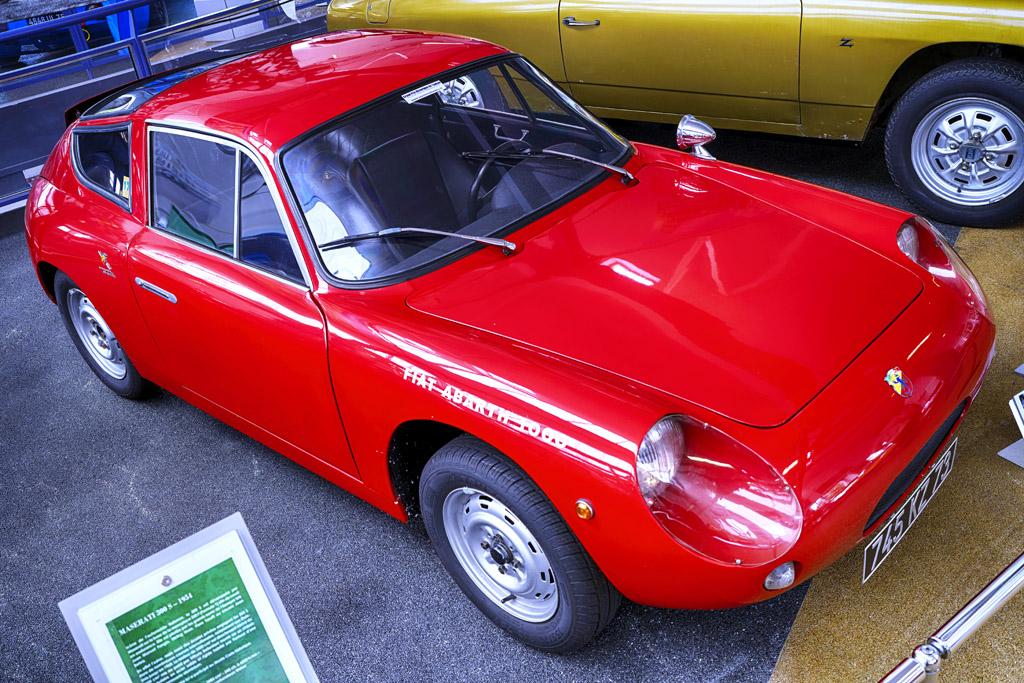
|
Lamborghini Countach 5000 S - 1983
Ferruccio Lamborghini presented his new « super car » at the 1971 Geneva Motor Show, which was to succeed the Miura.
It was Marcello Gandini, a designer at Bertone, who was responsible for designing the most extravagant and futuristic car of the time.
It was, along with its rival, the Ferrari BB, the most powerful and fastest car of the time.
The Countach was produced from 1974 to 1978 under the name LP400.
Its style was reminiscent of the concept cars of the early 1970s, all very futuristic.
In 1978, the bull brand developed the car, the LP400 S, then the LP500 S type (1982) received a large 4L8 engine with increased performance reaching 375 hp.
In 1985, the Countach LP500 QV improved the model for the third time with a new 5L2 engine with 4 valves per cylinder and an injection system for the American versions. 1990 is the last year of the Countach which gives way to the Diablo.
|
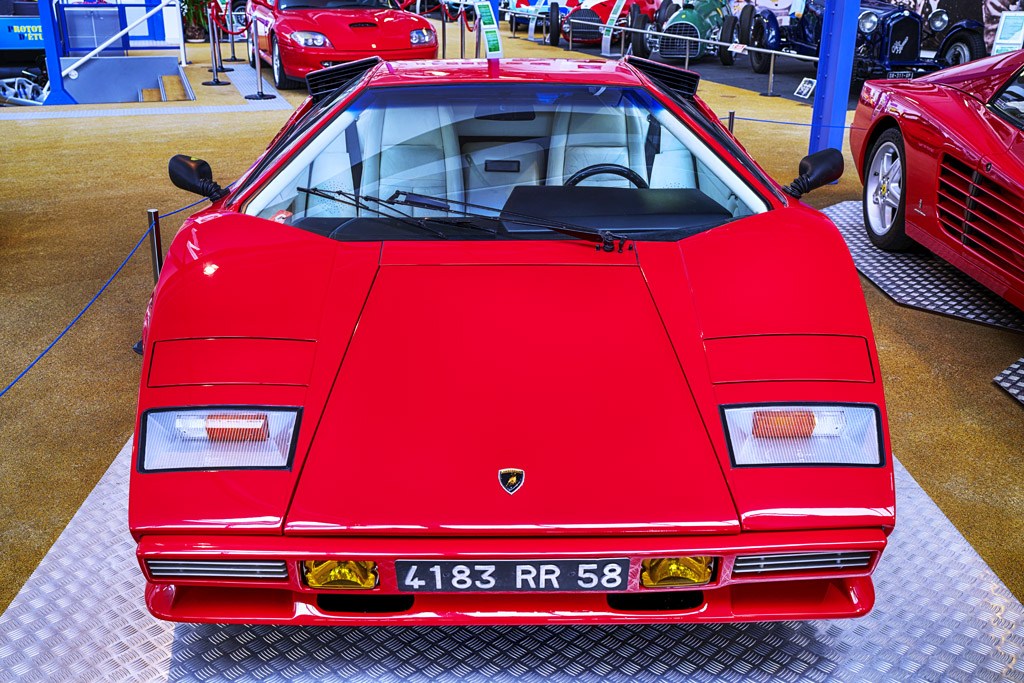
|

|

|
Lancia Aurelia B24 Cabriolet Pinin Farina - 1958
The Lancia Aurelia, presented at the 1950 Turin Motor Show, was powered by an aluminum V6 (B10), which was a world first on a production car. Its name was inspired by the Via Aurelia, a Roman road linking Rome to the French Côte d'Azur.
Its rivals at the time were the Mercedes-Benz 300 SL, Alfa Romeo 1900, Aston Martin DB2... What a great bunch!
This charming B24 convertible was designed and built by Pininfarina, while the coupé version was by Mario Boano-Ghia.
On the sports side, the Lancia Aurelias won many victories in both rallies and on the circuit.
|
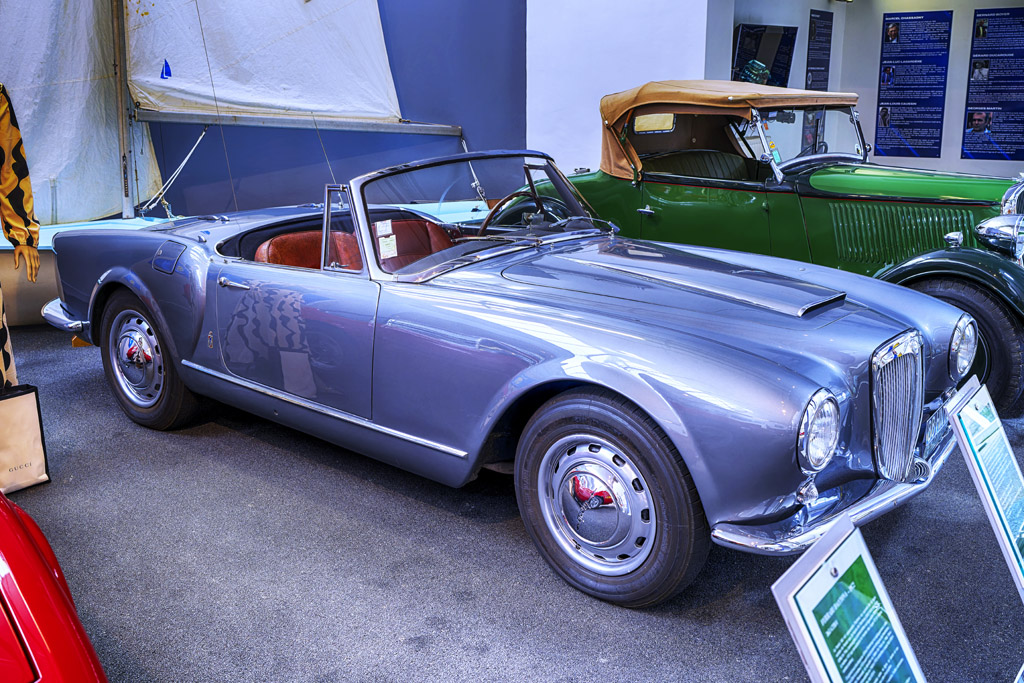
|

|
Lancia Flavia 1800 Coupé Sport Zagato - 1966
After the war of 1939-1945, Lancia and Zagato will embark on a fruitful collaboration. The Zagato versions are always the most powerful and the most exclusive of the sports derivatives of the Lancia models.
The Flavia Sport model is a Zagato coupé derived from the mid-range Lancia saloon and is revealed at the Geneva Motor Show 1962.
We notice its singular line due to the Milanese coachbuilder, its two-sided grille and its curved rear quarter windows ending on the roof then a conclave rear window. As always with Zagato, the body is made of aluminum. This car exists in two versions: 1500 cm³ and 1800 cm³.
|
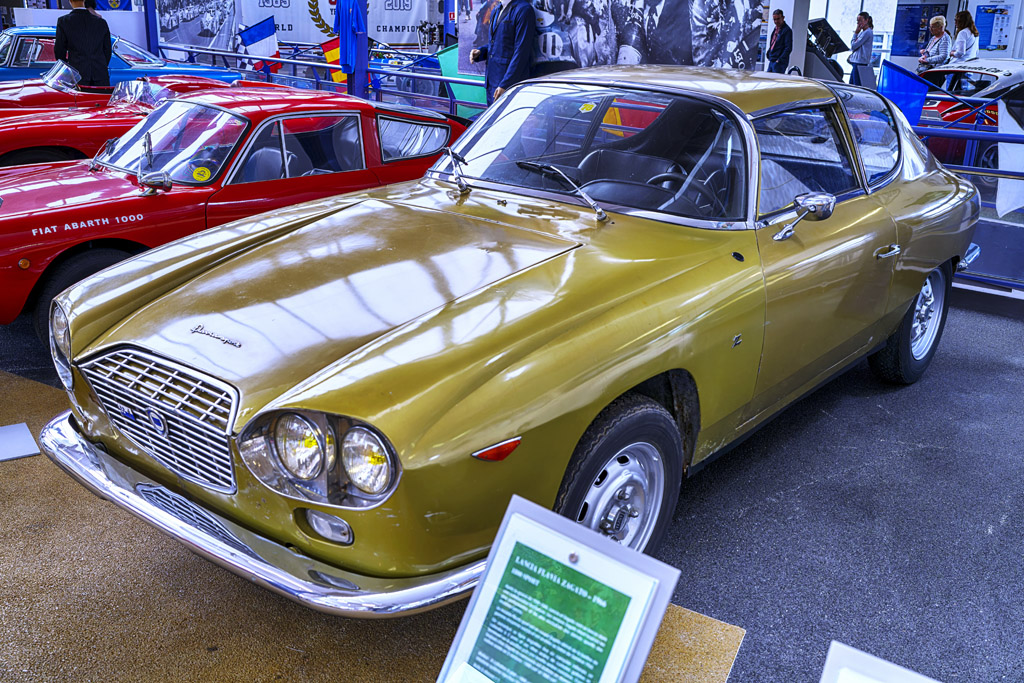
|
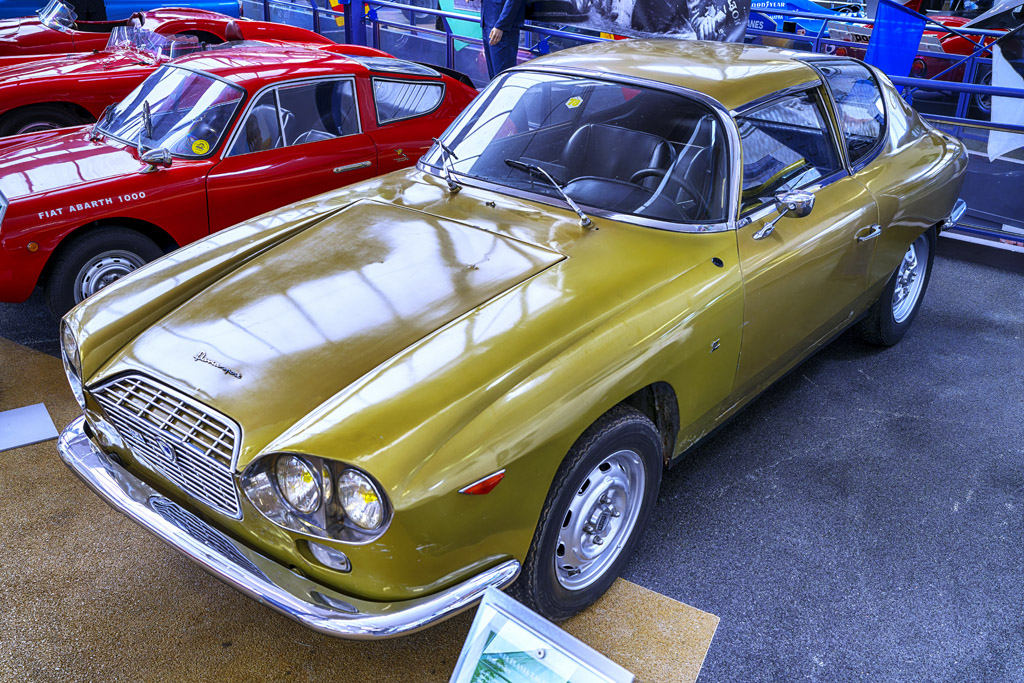
|
Lancia Stratos HF - 1976
What a rally icon this Lancia Stratos is! A true legend that won everything in competition in the second half of the 1970s: three consecutive World Rally Championship titles (1974, 1975 and 1976), three European Rally Championship titles (1976, 1977 and 1978), the Italian Rally Champion title four years in a row from 1976 to 1979, French Rally Champion 1976 and 1978, Spanish in 1979 and 1981, Greek in 1978 etc...
The list is very long.
The style of the Stratos is due to the grandmaster Nuccio Bertone. 492 examples were built from 1973 to 1978, including a road version called « Stradale » in 1973.
Drivers Darniche, Andruet, Munari, Waldegard, Alen, Corello and Fassina distinguished themselves at the wheel.
|
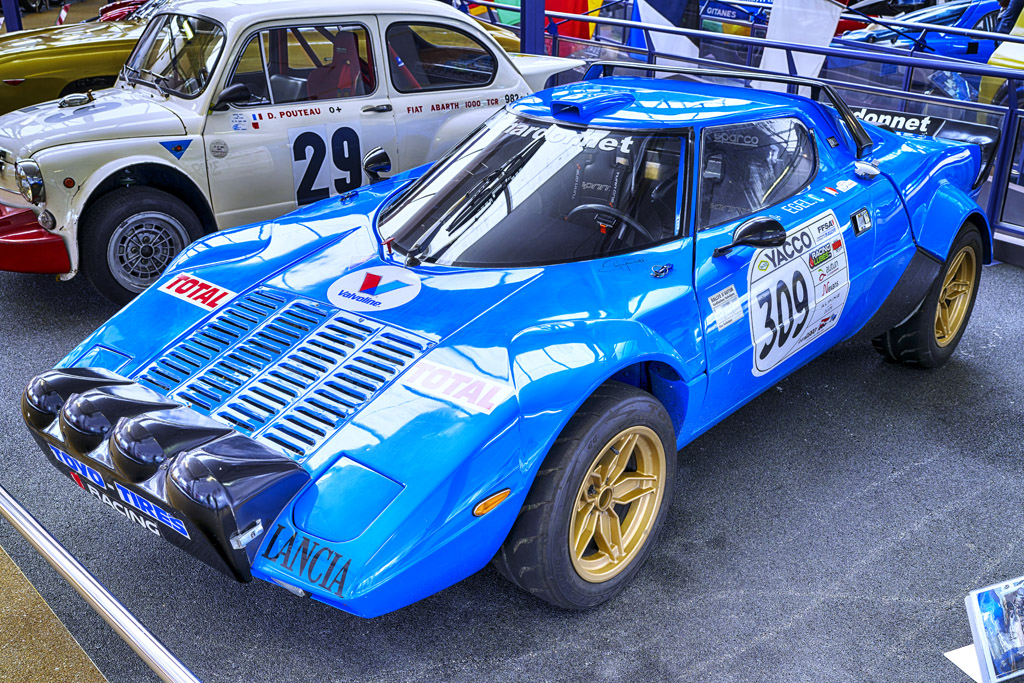
|

|
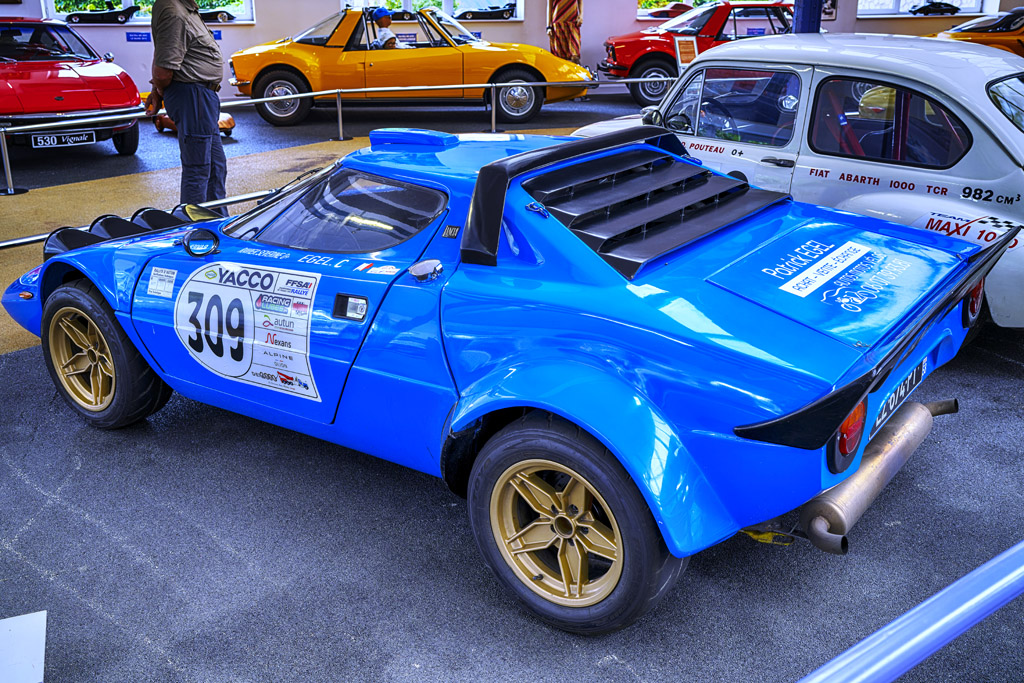
|
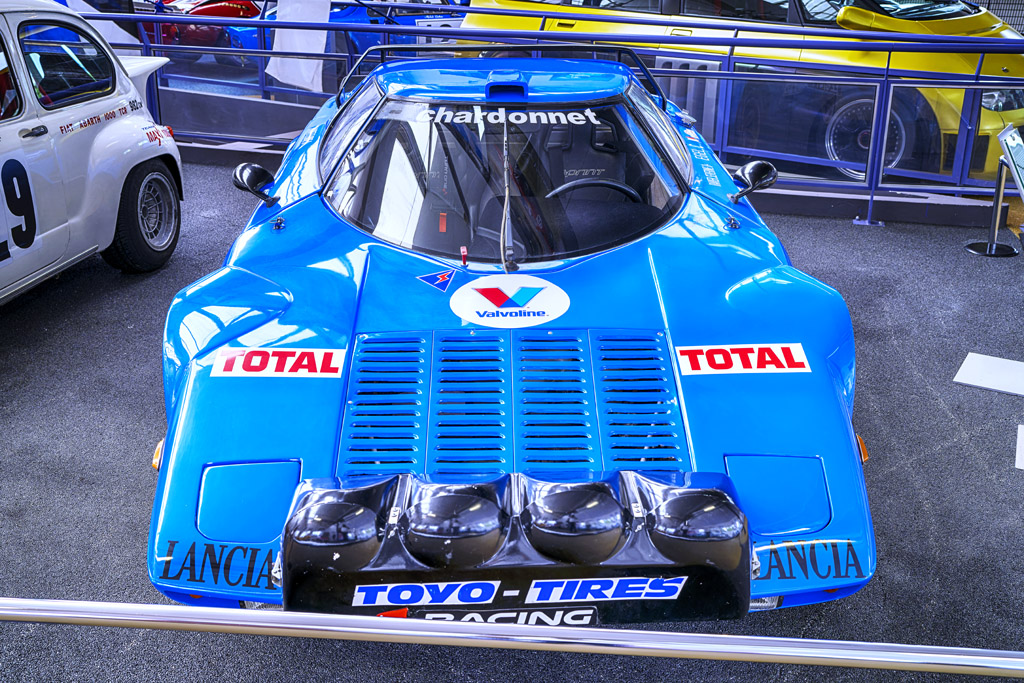
|
Maserati 300 S Spyder - 1954
An icon of the Italian automobile, the 300 S was developed by Maserati based on the 250 F single-seater (Formula 1) in order to race in endurance. It was driven by the big names of the time such as Juan Manuel Fangio, Stirling Moss, Piero Taruffi and Jean Behra.
Indeed, the factory, but also private teams entered the 300 S in many races.
|
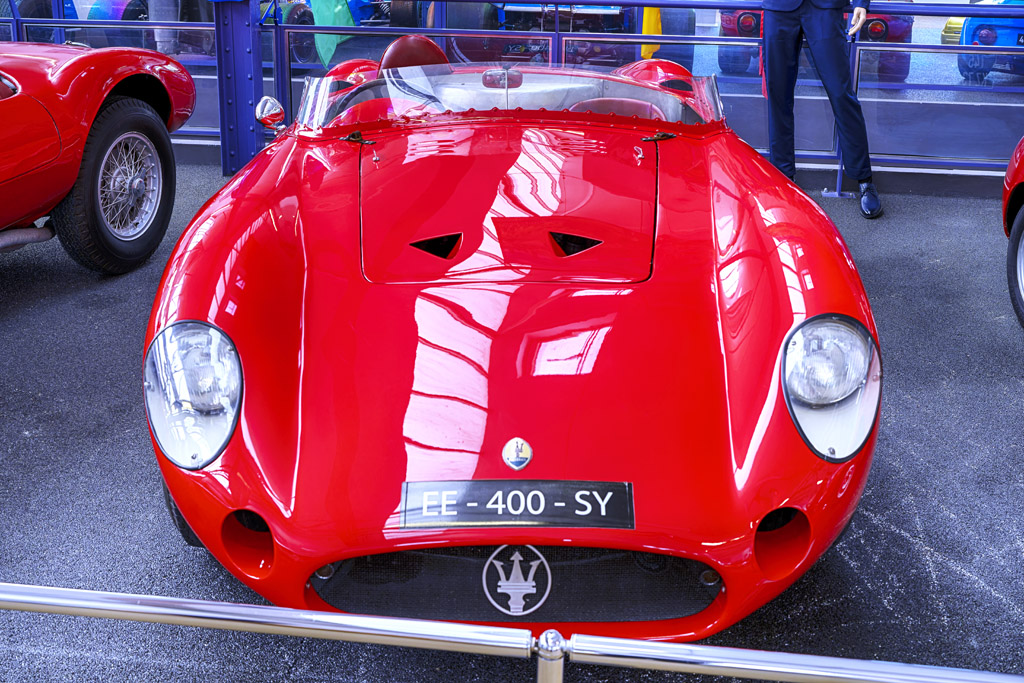
|
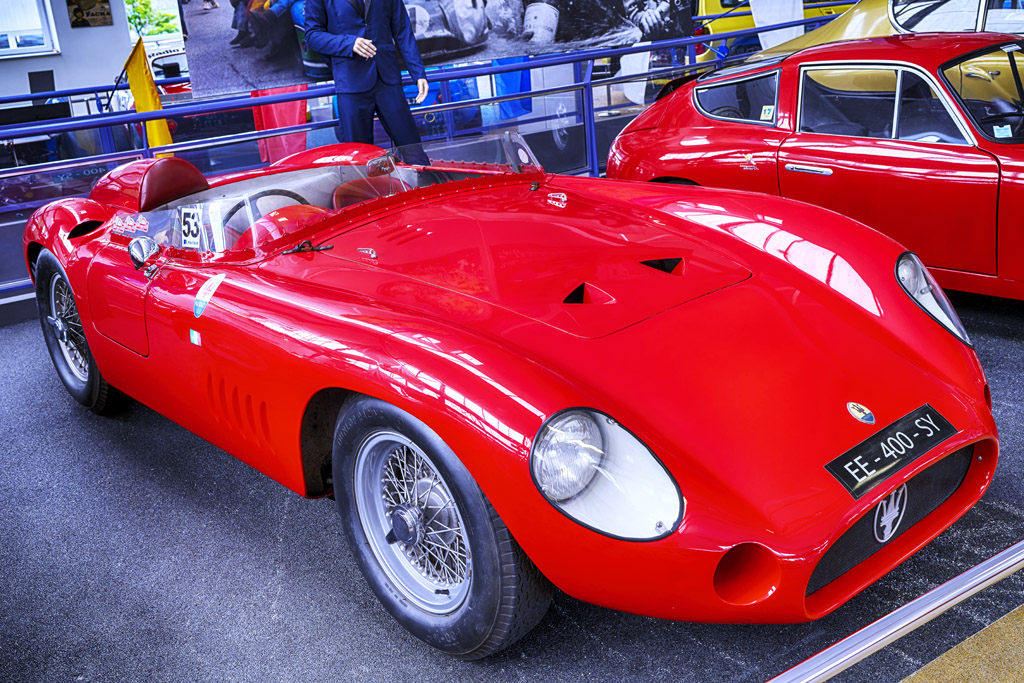
|
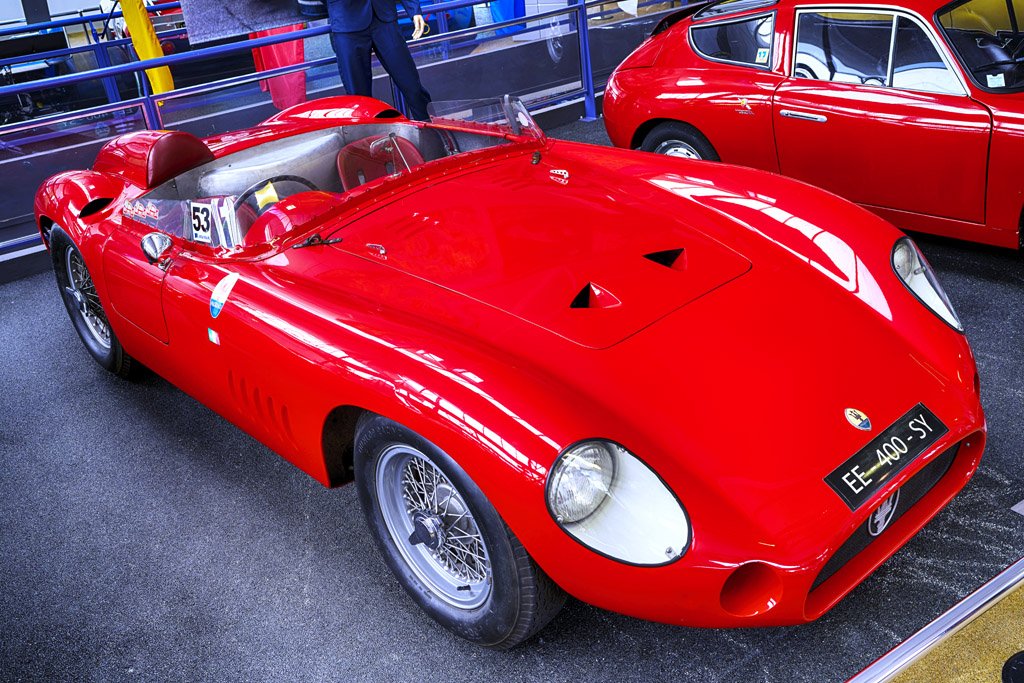
|
Maserati 3500 GT Coupé Touring - 1960
The trident brand was created in 1914 in Bologna by Alfieri Maserati. This family of 7 brothers was particularly devoted to the automotive world.
It was in 1926 that Alfieri and Ettore Maserati decided to produce their own racing car, the Tipo 26.
It was indeed competition that would be the spearhead of Maserati since only racing cars were built until 1940.
It was only from 1946 that the first touring models were released, starting with the A6/500 (150 units).
The 3500 GT model (presented here) was the first Maserati built on a production line in 1957. It was the result of a collaboration between Giulio Maserati and the coachbuilder Touring. The 3500 GT was the brand's first commercial success.
|

|
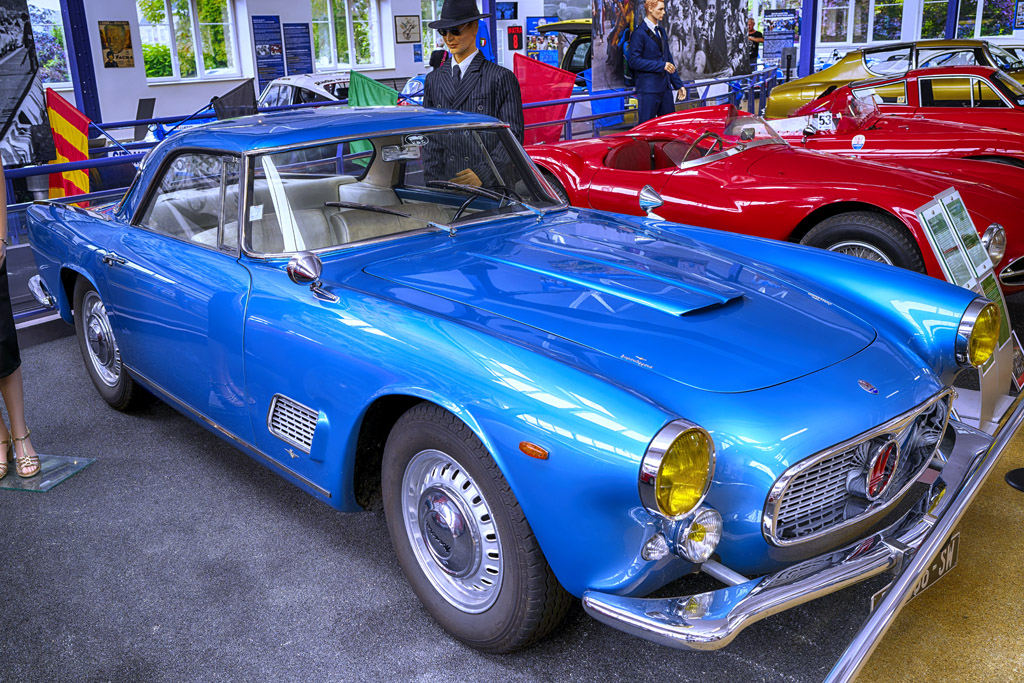
|
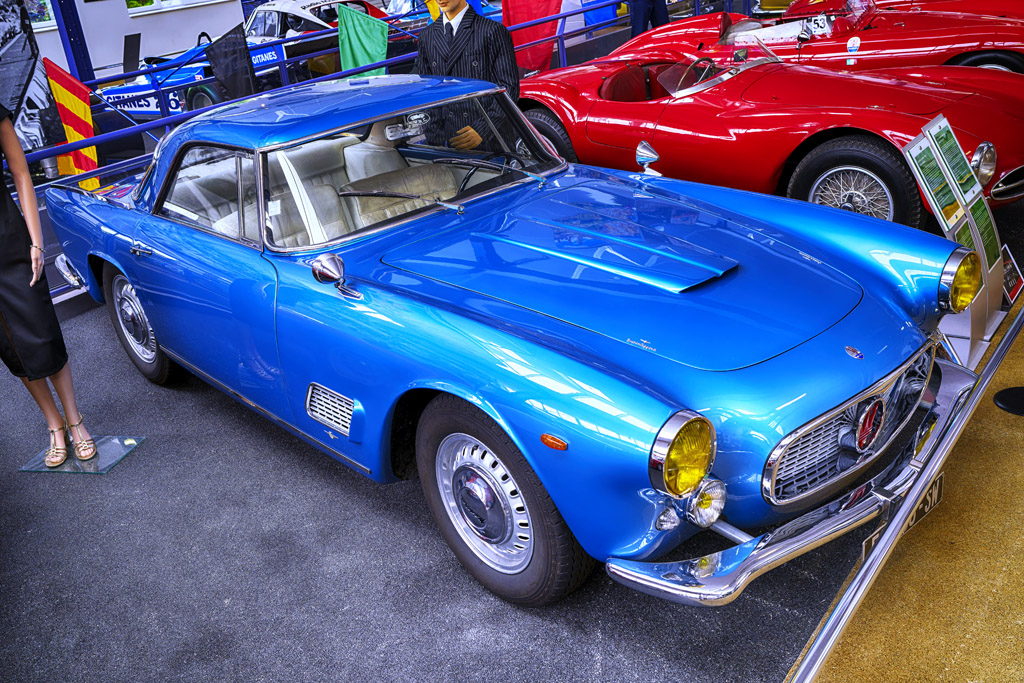
|

|
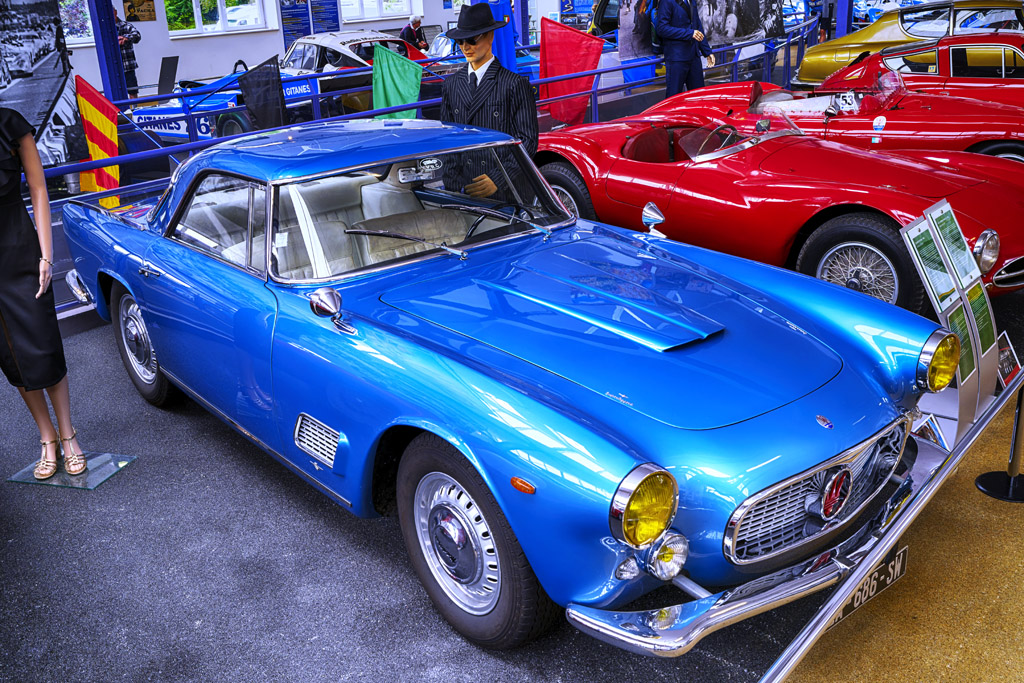
|
|

